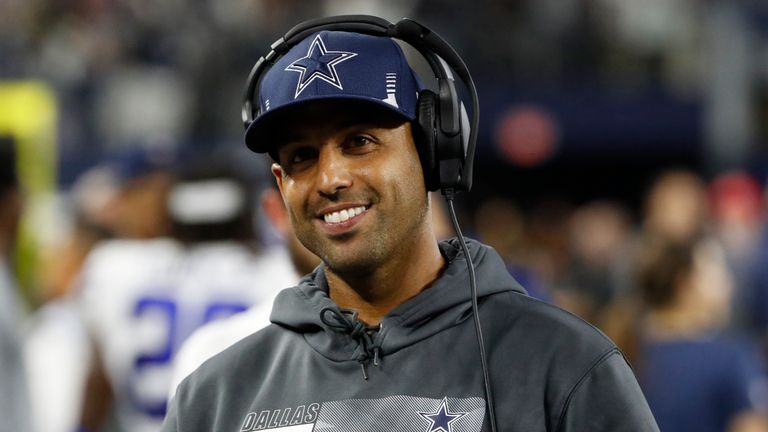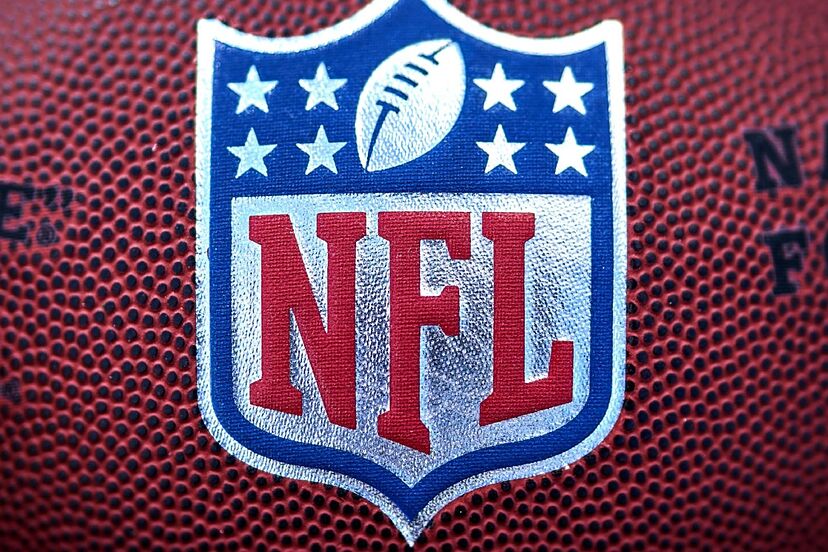Zone defense and man-to-man defense are two different strategies used in basketball for defensive purposes. Zone defense involves players guarding specific areas and staying in position, whereas man-to-man defense involves players each guarding an opposing player.
Zone defense focuses on defensive positioning and teamwork, while man-to-man defense requires individual matchups and close guarding. Both strategies have their advantages and disadvantages, and coaches often choose which to use based on their team’s strengths and the opponent’s playing style.
Understanding the differences between zone defense and man-to-man defense is crucial for players and coaches to develop effective defensive strategies.
Advantages Of Zone Defense
Zone defense and man-to-man defense are two popular strategies used in basketball to defend against opponents. While both have their advantages, zone defense offers increased coverage and help defense. By deploying players to specific areas of the court, a zone defense creates more opportunities to guard against scoring attempts. Furthermore, zone defense disrupts passing lanes, making it difficult for opponents to find open teammates. This can lead to turnovers and fast break opportunities for the defending team. Another advantage of zone defense is its effectiveness in preventing penetration to the basket. By positioning players strategically, the defense can close gaps and limit driving lanes, forcing opponents to settle for outside shots. Overall, zone defense can provide a cohesive and efficient approach to defense, maximizing coverage and disrupting opponents’ offensive strategies.
Disadvantages Of Zone Defense
Disadvantages of Zone Defense:
Zone defense in basketball can have its drawbacks, particularly when it comes to vulnerability to outside shooting. Since defenders are assigned an area rather than a specific player, this defensive strategy leaves room for opponents to exploit gaps and find open shooting opportunities. Additionally, zone defense often faces challenges in rebounding as players are not assigned to box out specific opponents, making it harder to secure the ball when it comes off the rim. Moreover, this strategy can be challenging to adapt to different offensive plays since it requires players to constantly communicate and adjust their positions based on the whereabouts of the offense. These disadvantages highlight the importance of considering the trade-offs between zone defense and man-to-man defense in basketball.
Advantages Of Man-To-Man Defense
Advantages of Man-to-Man Defense:
Man-to-man defense in basketball offers several benefits that can have a significant impact on the game. One advantage is the intense pressure it puts on individual opponents. By assigning a defender to closely guard a specific player, the defense can disrupt their offensive flow and limit their scoring opportunities.
This strategy also allows for quick adjustments and targeted defense against specific players. Whether it’s to counter a strong scorer or neutralize a key playmaker, the man-to-man defense can adapt and focus on individual threats.
Another advantage is the potential for steals and turnovers. With tight coverage and constant pressure, defenders can anticipate passes and create turnovers, leading to fast-break opportunities for their team.
Overall, the man-to-man defense can be an effective strategy to neutralize individual opponents, apply pressure, and create turnovers. Its flexibility and ability to adapt make it a valuable tool in basketball.
Disadvantages Of Man-To-Man Defense
Man-to-man defense has its advantages, but it also has some notable disadvantages that coaches and players should consider. One drawback is its susceptibility to screens and picks, which can lead to open shots for the opposing team. Additionally, the constant movement required to stay with your assigned player can be physically demanding, leading to fatigue and increasing the risk of mismatches. Moreover, man-to-man defense places a heavy emphasis on individual defensive skills, requiring each player to be able to effectively guard their assigned opponent one-on-one.
Analyzing Your Team And Opponents
When analyzing your team and opponents in a defensive strategy, it’s important to consider the personnel strengths and weaknesses. Understanding the individual skills and capabilities of your players will help determine whether a zone defense or man-to-man is better suited for your team.
Zone Defense: If your team consists of players who are particularly adept at reading and reacting to the offensive movements, a zone defense can be an effective choice. This allows for more help defense and can disrupt the opponent’s offensive flow.
Man-To-Man Defense: On the other hand, if you have strong individual defenders who excel in one-on-one matchups, employing a man-to-man defense can put pressure on the opponents and limit their scoring opportunities.
Additionally, studying the offensive tendencies of your opponents through scouting reports and analyzing game situations can provide valuable insights for developing a defensive strategy. Understanding their preferred shooting spots or offensive plays can help your team anticipate and counter their moves effectively.
Zone Press Defense
Zone press defense is a defensive strategy in basketball that involves applying pressure in the backcourt. This defensive tactic aims to disrupt the opposing team’s offense by forcing turnovers and creating scoring opportunities. With zone press defense, players strategically position themselves in specific areas of the court to cover passing lanes and trap the ball handler. This type of defense requires players to communicate effectively and work together to anticipate and react to the movements of the offense. On the other hand, man-to-man defense involves each defender being responsible for guarding a specific opponent. This defensive strategy requires players to closely match up with their assigned opponents, using their athleticism, footwork, and defensive skills to limit scoring opportunities. Each defensive strategy has its own advantages and disadvantages, and coaches may choose to employ either zone press defense or man-to-man defense based on the strengths of their players and the anticipated offensive strategies of the opposing team.
Man-To-Zone Defense
Zone defense and man-to-man defense are two popular strategies used in basketball to counter the opponent’s offensive plays effectively. While zone defense focuses on area coverage and teamwork, man-to-man defense assigns a defender to guard a specific opponent.
However, there is a way to combine the strengths of both strategies by utilizing man-to-man principles within a zone scheme. This approach allows for more flexibility and adaptability, as defenders can switch and rotate to provide pressure and disrupt the offense. It also helps in minimizing mismatches and maintaining defensive assignments.
By incorporating man-to-man principles, such as communication, denying passing lanes, and fighting through screens, within a zone defense, teams can create confusion for the opposition and force turnovers. This hybrid defensive strategy requires disciplined and well-coordinated teamwork.
Recognizing Offensive Patterns And Adjustments
Recognizing offensive patterns and adjustments is a crucial skill for any defensive strategy. By identifying offensive sets and plays, defenders can anticipate adjustments made by their opponents. Zone defense and man-to-man defense both require defenders to analyze offensive movements and adapt accordingly.
A zone defense focuses on guarding specific areas of the court rather than individual players. Defenders must recognize offensive patterns in order to position themselves effectively and prevent scoring opportunities. By understanding the offensive sets and plays commonly used by opponents, defenders can anticipate how the offense will attack a zone defense and adjust their positioning accordingly.
On the other hand, man-to-man defense requires defenders to closely guard specific opponents. By recognizing offensive patterns, defenders can anticipate screens, cuts, and other movements by opponents and adjust their positioning to deny scoring opportunities. Being aware of the offensive sets and plays commonly used by opponents allows defenders to make proactive adjustments to minimize offensive success.
By being knowledgeable about offensive patterns and adjustments, defenders can execute their defensive strategy more effectively. This understanding is crucial in both zone defense and man-to-man defense, allowing defenders to anticipate offensive movements and make the necessary adjustments to stifle scoring opportunities.
Communicating And Collaborating On The Court
When it comes to defensive strategies in basketball, two popular options are zone defense and man-to-man defense. Both require effective communication and collaboration among players on the court.
One key aspect of effective communication is the use of signals and gestures to quickly convey information to teammates. These signals can indicate switches, traps, or rotations, ensuring that everyone is on the same page and ready to defend against the opposing team.
In addition to communication, teamwork and coordination play a vital role in executing defensive rotations. Each player must know their role and be in sync with their teammates to effectively cover the court and prevent scoring opportunities.
By emphasizing communication and collaboration, teams can improve their defensive performance and create a cohesive unit on the court. Whether employing a zone defense or man-to-man defense, the ability to work together as a team is essential for success.
Trapping And Double Teaming
Zone defense and man-to-man defense are two common strategies used in basketball to defend against opponents. A key aspect of defensive play is the ability to apply pressure and force turnovers. Trapping and double teaming are tactics that can enhance defensive pressure and disrupt the opposing team’s offensive flow.
Strategic trapping involves setting up traps in areas of the court where the opponent is likely to dribble or pass the ball. This can be done by positioning defenders in such a way that they can quickly close in on the ball handler, forcing them into making a rushed decision. Double teaming, on the other hand, involves two defenders simultaneously guarding one offensive player, making it difficult for them to find open passing lanes or shoot.
By executing these defensive techniques effectively, teams can create confusion, force turnovers, and limit the opponent’s scoring opportunities. However, it requires coordination, communication, and a deep understanding of the opponents’ strengths and weaknesses.
Denial Defense And Face Guarding
The denial defense and face guarding are crucial strategies in basketball to limit offensive options and disrupt plays. Denial defense involves closely guarding an offensive player to deny them the ball, making it difficult for them to initiate plays. This strategy aims to disrupt the team’s offensive flow and force them to rely on alternative options. Face guarding, on the other hand, focuses on shutting down specific offensive threats by closely marking them and limiting their scoring opportunities. By face guarding key players, defenders aim to neutralize their impact on the game and force the offense to rely on their less effective options. These defensive strategies require intense focus, quick reactions, and excellent communication between defenders to execute effectively.
Coach’S Influence On Defensive Strategies
Coaches play a vital role in influencing defensive strategies on the basketball court. They have the responsibility of teaching proper defensive fundamentals to their players, ensuring they understand the importance of positioning, communication, and teamwork. By developing disciplined and focused defenders, coaches can enhance their team’s overall defensive performance.
When it comes to defensive strategies, two popular options are zone defense and man-to-man defense. Zone defense involves players guarding a specific area rather than an individual player, while man-to-man defense requires each player to directly guard an assigned opponent.
Both strategies have their benefits and drawbacks. Zone defense can be effective in disrupting passing lanes and minimizing penetration, while man-to-man defense allows for more individual accountability and versatility in defending different players.
It’s crucial for coaches to understand the strengths and weaknesses of each strategy and determine which one best suits their team’s abilities and game plan. Ultimately, the coach’s influence and expertise in teaching defensive fundamentals will enable their team to execute the chosen strategy effectively.
Players’ Roles And Skills
When it comes to defensive basketball strategies, teams often choose between zone defense and man-to-man defense. Both strategies have their advantages and it is important for players to understand their roles and skills within these defensive systems.
In zone defense, players have specific areas of the court to guard rather than guarding an individual player. This requires players to have strong communication skills and a good understanding of spacing and positioning. They need to be able to quickly recognize offensive movements and adjust their positioning accordingly. Additionally, players in zone defense need to be able to read the game and make split-second decisions, such as when to trap, help, or rotate.
On the other hand, man-to-man defense requires players to guard an assigned player throughout the game. This strategy emphasizes individual defensive skills and techniques. Players need to be able to stay in front of their assigned player, deny passes, and contest shots. They must also have good footwork and be able to navigate screens and switches effectively.
Ultimately, regardless of the defensive strategy chosen, players must be willing to sacrifice personal goals for the sake of team defense. This means being selfless, giving full effort, and being accountable for their defensive responsibilities.

Credit: www.skysports.com
Tracking Defensive Stats And Metrics
Tracking Defensive Stats and Metrics
Points allowed per possession is an essential defensive statistic that measures how effective a team is in stopping their opponents from scoring. It reflects the number of points surrendered each time the opposing team has the ball. Coaches and analysts use this metric to evaluate the overall defensive performance and determine the effectiveness of a defensive strategy. Monitoring the points allowed per possession helps identify weaknesses in the defense and provides insights into adjustments that may need to be made during gameplay.
Defensive field goal percentage is another critical metric that gauges a team’s ability to prevent their opponents from making successful shots. It calculates the ratio of missed field goal attempts by the opposing team against the total number of field goal attempts. A lower defensive field goal percentage indicates a more effective defense. This metric is valuable for determining the efficacy of different defensive strategies such as zone defense or man-to-man.
Rebounding and turnovers forced are other key defensive stats that contribute to a team’s success. Rebounding measures a team’s ability to gain possession of missed shots, while turnovers forced reflects their ability to create turnovers. Both metrics are crucial for controlling the game’s pace and limiting the opposing team’s scoring opportunities. A strong defensive rebounding effort can prevent second-chance points, while forcing turnovers disrupts the offensive flow. By tracking these stats, coaches and analysts can assess the effectiveness of defensive strategies and make necessary adjustments to optimize their team’s performance.
Mental Preparation For Defensive Excellence
Mental preparation plays a crucial role in achieving defensive excellence. It encompasses focus, concentration, and anticipation, which are essential skills to master. Maintaining a defensive mindset as a team culture is equally important. By emphasizing the significance of defense and instilling a commitment to collective effort, teams can achieve better cohesion and effectiveness in their defensive strategies.
Frequently Asked Questions Of Defensive Strategy: Zone Defense Vs. Man-To-Man
Which Is Better Zone Defense Or Man-To-Man?
Zone defense and man-to-man both have their strengths, but ultimately, it depends on the team’s strategy and the opponent’s lineup.
What Is One Main Difference Between Man Defense And Zone Defense Strategies?
Man defense focuses on guarding one specific player, while zone defense involves guarding an area on the court.
Does Nba Play Zone Or Man-To-Man Defense?
The NBA uses both zone and man-to-man defense strategies in games.
Why Did Nba Ban Zone Defense?
The NBA banned zone defense due to its ability to slow down the game and limit individual player matchups.
What Is A Zone Defense And How Does It Work?
Zone defense is a basketball strategy where players cover specific areas rather than individual opponents. It focuses on defending zones and preventing easy scoring opportunities for the opposing team.
Conclusion
To wrap up, zone defense and man-to-man defense each have their strengths and weaknesses, making them valuable tools for basketball teams of all levels. Zone defense can effectively limit the opponent’s scoring opportunities by protecting the basket and forcing outside shots.
It enables teams to work together, communicate, and quickly adapt to offensive strategies. On the other hand, man-to-man defense allows for more individual pressure and can disrupt the opponent’s offensive flow. It emphasizes players’ athleticism, tenacity, and defensive abilities. Ultimately, the choice between these defensive strategies depends on various factors like the team’s style of play, the opponent’s strengths and weaknesses, and the coach’s philosophies.
It’s important for coaches and players to understand the intricacies of both zone defense and man-to-man defense, as being able to switch seamlessly between the two can give a team a competitive advantage. By leveraging the strengths of each strategy and adapting to game situations, teams can develop a well-rounded defensive approach that can lead to success on the court.




